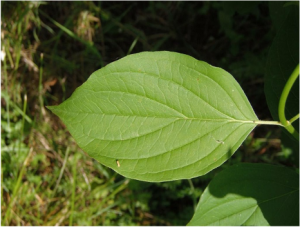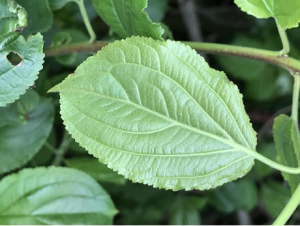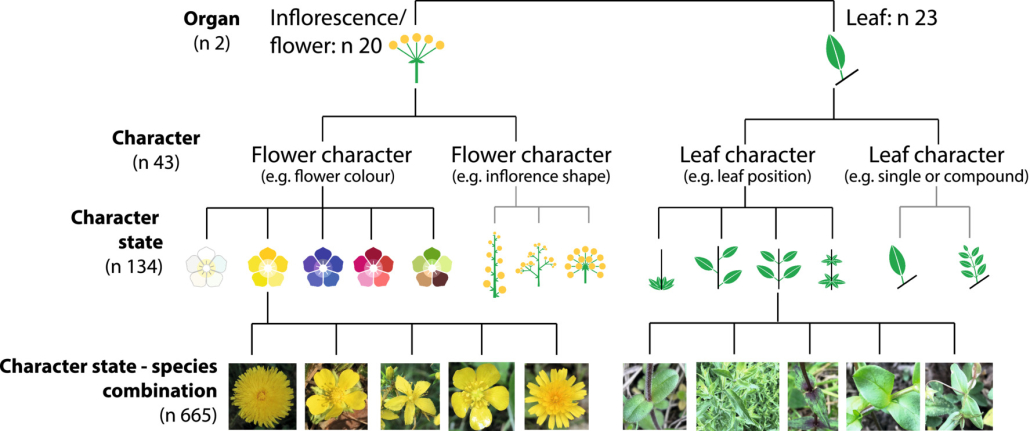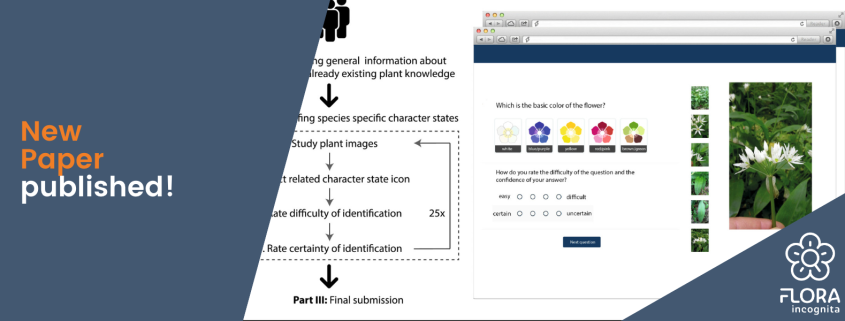The future of key-based plant identification – a user study
Our publication “Towards more effective identification keys – a study of people identifying plant species characters” shares insights into this by systematically examining how well people with different backgrounds in botany perceive, understand and relate morphological plant characteristics. In the end, our assessment suggests a set of design principles for intuitive and user-friendly identification keys.
Read it here: Towards more effective identification keys – a study of people identifying plant species characters
Context
The correct and quick identification of plant species plays an important role in the protection of biodiversity, because people can only protect what they know. Automated species identification via apps like Flora Incognita can help closing the knowledge gap, but still the most common way of identifying plant species is working with character keys in printed books. For laypersons, these keys are often difficult to understand because of the widespread use of technical terms and the lack of easily understandable illustrations.
But biodiversity monitoring often involves or even relies on citizen scientists. In many cases, detailed information on species, phenological characteristics or other markers are required to fulfill the given tasks. To be able to keep and grow the number of citizen scientists contributing to monitoring projects, new approaches to support beginners would be helpful – especially in building species identification skills based on plant characteristics quickly and reliably.
Why is the correct perception of plant characters important?
In this example, you can see pictures of the European buckthorn (Rhamnus cathartica) and the common dogwood (Cornus sanguinea). On first sight, both species look very similar, so the exact perception and description of the leaves’ edges is a determining factor of species identification:

Cornus sanguinea, the common dogwood

Rhamnus cathartica, the European buckthorn
With its grey-brown bark and often thorny branches, Rhamnus cathartica has elliptic to oval leaves with serrated margins.Cornus sanguinea on the other hand has dark greenish-brown branches with elliptic to oval leaves that have an entire margin.
The determining factor in this case is one adjective that needs to be known, understood and perceived to identify the plant in question.
The study

Findings
On average, the participants identified 79% of the characters correctly, even those without extensive species knowledge. Those who declared themselves as intermediate or expert in terms of plant expertise needed less images of the respective plant to give a clear answer, and felt overall more sure about their answer. On average, flower-related characters were identified significantly more often and faster than leaf-related characters. Also, flower-related characters needed less images to find a definite answer.
Conclusion
It seems that with carefully derived plant characters, illustrated by a combination of icons and explanatory text, even complex structures can be understood and correctly addressed even from laypersons. With this, we show that future design of traditional identification keys should not only focus on botanical terms, but also on the users and their current skill set. Improving the species knowledge and learning plant identification methods via apps or printed guidelines can be supported by intuitive icons, descriptions and questions that guide the user through the identification process.
Publication:
Wäldchen, J., Wittich, H. C., Rzanny, M., Fritz, A., & Mäder, P. (2022). Towards more effective identification keys: A study of people identifying plant species characters. People and Nature. https://doi.org/10.1002/pan3.10405

